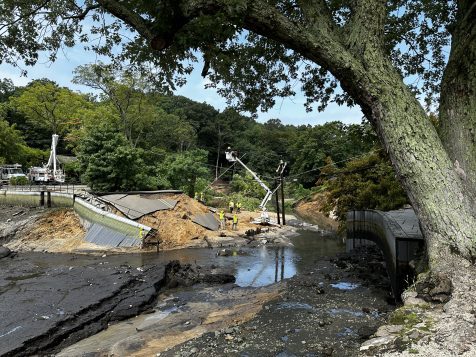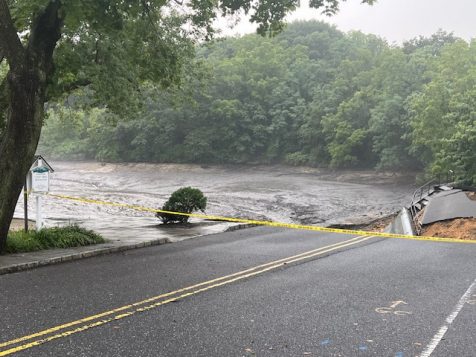By Toni-Elena Gallo
The village of Stony Brook is on the mend following the devastating Aug. 18-19 storm.
Gloria Rocchio, president of The Ward Melville Heritage Organization spoke to TBR News Media about the latest updates on Harbor Road., the Mill Pond, Mill Creek Road and the community as a whole.
On Saturday, Aug. 24, All Souls Episcopal Church on Main Street held an After the Flood Thanksgiving ceremony, celebrating the resilience of the village. Both Christian and Jewish prayers were recited, as well as the Lakota Native American prayer, “O! Great Spirit.” People were gathered, songs were sung and according to Rocchio, “healing happened.”
Stony Brook University, which saw some dormitory basements flooded with up to 9 feet of water, has been assessed, and the damage cost is estimated at $22 million.
In addition, the Avalon Nature Preserve’s displaced wildlife is being attended to by Strong Island Animal Rescue League in Port Jefferson Station, and Sweetbriar Nature Center, located in Smithtown.
“A night heron was found under a creek, afraid. Sweetbriar took it, gave it medicine and released it behind Rob Taylor’s house, which is on the creek. And, I’ll tell you, that bird took off like crazy,” Rocchio said.
“As for the creek, the wildlife is coming back. There’s some water, there again. Mallard ducks, two swans — it’s coming back. But, unless the dam is rebuilt and the road is built, every time there is heavy rain, it will end up behind the creek, behind the houses or in the houses,” she added.
Rocchio said that the flow of water has changed since the house on Harbor Road was destroyed. “The flow has to go back, because there is so much sand in the creek, it needs to be taken out and put back where it was, because it is eroding all the trees on Mill Creek Road. Every time the tide [from Stony Brook Harbor] goes in and out, it erodes the land more.”
The Mill Pond has seen an increase in water flow as well. However, “the sand coming in” with it, is not good for the health of the pond. The sediment running along with the water is, however, instrumental in “flushing it.”
“But, it still flows from springs, from all over. But, not a lot,” she elaborated.
Rocchio is hoping elected officials will “move quickly” to restore the area’s delicate ecosystem.












